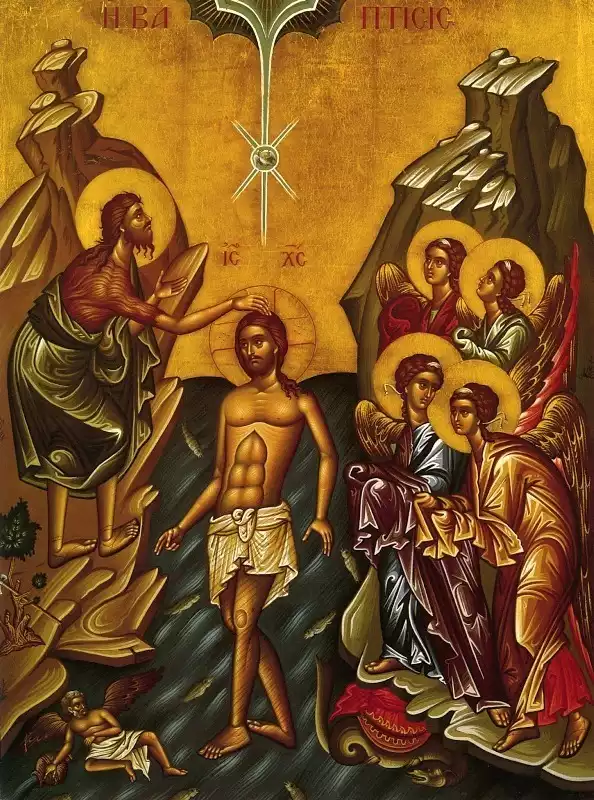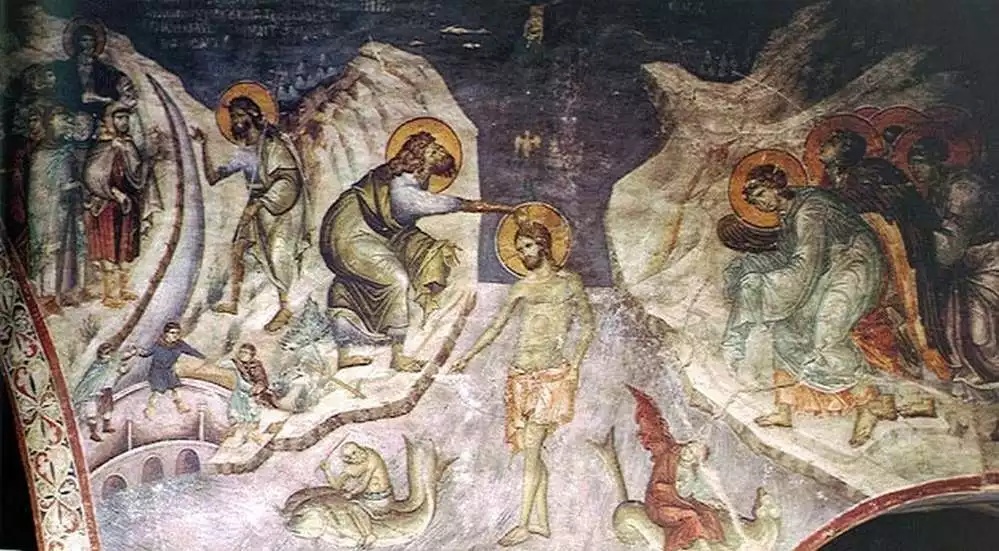
Epiphany, also known as Theophany, is a significant Christian feast that commemorates the revelation of God incarnate as Jesus Christ.
Historical Roots of Epiphany
Epiphany, derived from the Greek word ‘epiphaneia’, meaning ‘manifestation’ or ‘appearance’, is celebrated on January 6th. It is one of the oldest Christian feasts, dating back to at least the 2nd century. Initially, Epiphany encompassed various events in Jesus’ life that demonstrated His divinity, including His birth, the visit of the Magi, His baptism by John the Baptist, and His first miracle at the wedding at Cana.
In the Eastern Orthodox Church, the focus of the feast is primarily on the baptism of Christ, signifying the revelation of the Holy Trinity. This event is seen as a fulfillment of Old Testament prophecies and marks the beginning of Jesus’ public ministry. Verses in the Bible referencing this event include Matthew 3:13-17, Mark 1:9-11, and Luke 3:21-22.
In contrast, Western Christianity, particularly the Roman Catholic Church, emphasizes the visit of the Magi as recorded in Matthew 2:1-12. This event is interpreted as the manifestation of Christ to the Gentiles, symbolizing the universal nature of Jesus’ mission.
The varying focus on different aspects of Christ’s life during Epiphany highlights the rich tapestry of Christian tradition and theology. While the Orthodox and Catholic Churches have distinct emphases, both recognize the feast as a celebration of Christ’s manifestation to the world.
This chapter establishes the historical context of Epiphany, laying a foundation for further exploration into its theological implications and denominational practices in subsequent chapters. By examining the origins and development of the feast, we gain insight into the diverse ways Christians have understood and celebrated this pivotal event in the Christian liturgical calendar.
Theological Significance in Orthodox Christianity
In Eastern Orthodox theology, Epiphany, also known as Theophany, holds profound theological significance. It is primarily celebrated as the Baptism of Jesus Christ in the Jordan River, an event that is deeply emblematic of the revelation of the Holy Trinity. This chapter delves into the Orthodox understanding of Epiphany and its theological implications.
The Baptism of Christ is a pivotal moment in Christian history, as it marks the first public revelation of the Holy Trinity. During the baptism, the heavens open, the Spirit descends like a dove, and the voice of the Father is heard, declaring Jesus as His beloved Son (Matthew 3:16-17, Mark 1:10-11, Luke 3:22). This manifestation is not just a revelation of Christ’s divinity, but also a profound unveiling of the Trinitarian nature of God, which is central to Orthodox theology.
In Orthodox liturgy and iconography, Epiphany is rich with symbolism. The water of the Jordan is blessed, symbolizing the sanctification of the natural world through Christ’s baptism. This act represents the renewal of humanity and the undoing of the Fall, restoring the original purity of creation.
The Orthodox Church also views Epiphany as a moment of theophany, where God’s presence is made visible to humanity. This visibility is not just in the physical appearance of Christ, but in the revelation of God’s plan for salvation. It signifies the beginning of the fulfillment of the Old Testament prophecies and the initiation of the New Covenant between God and humanity.
Moreover, the feast of Epiphany in the Orthodox tradition is a time for the faithful to reflect on their own baptism. It serves as a reminder of their own initiation into the life of the Church and their personal participation in the life of the Holy Trinity. It is a call to live a life of holiness and a reminder of the transformative power of God’s grace.
In conclusion, within Orthodox Christianity, Epiphany is much more than a historical commemoration. It is a theological celebration that encapsulates key aspects of Christian doctrine, particularly the revelation of the Holy Trinity. It holds a mirror to the mystery of God’s manifestation in the world and invites the faithful to a deeper understanding of their faith and commitment to the Christian life.

Theological Meaning in Roman Catholicism
In Roman Catholicism, the feast of Epiphany holds significant theological meaning, focusing on the visit of the Magi and the manifestation of Christ to the Gentiles. This chapter explores the Catholic interpretation of Epiphany, emphasizing its implications for understanding the universal mission of Jesus.
The Gospel of Matthew (2:1-12) narrates the journey of the Magi, often interpreted as wise men or kings, who follow a star to Bethlehem to worship the newborn Jesus. This event holds profound theological significance in Catholic tradition. The Magi, coming from different nations and representing the Gentile world, symbolize the revelation of Christ not only to the Jews but to all of humanity. Their journey and homage to the Christ child mark the recognition of Jesus as the Savior of the world, transcending cultural and geographic boundaries.
In Catholic theology, the Epiphany is a celebration of Jesus’ manifestation as the Light of the World. The star that guides the Magi is a symbol of divine guidance, leading them to the truth of Christ. This imagery is deeply embedded in Catholic liturgy and art, reinforcing the theme of Christ as a beacon of hope and salvation for all people.
Epiphany in the Catholic Church also emphasizes the fulfillment of Old Testament prophecies, particularly those that foretell the adoration of the Messiah by all nations (e.g., Psalms 72:10-11, Isaiah 60:1-6). The feast invites the faithful to reflect on the universality of Christ’s message and the Church’s mission to evangelize and spread the Gospel to every corner of the world.
In essence, Epiphany in Roman Catholicism is a celebration of Christ’s revelation to the Gentiles, affirming the universal scope of His mission and the Church’s role in carrying this message forward. It is a reminder of the inclusivity of the Christian message and the call to embrace and share the light of Christ with all humanity.
Epiphany in Protestant Traditions
Epiphany in Protestant traditions varies widely, reflecting the diversity within these denominations. This chapter examines how different Protestant communities understand and celebrate Epiphany, highlighting the nuances in their theological interpretations and liturgical practices.
In many Protestant denominations, Epiphany retains its traditional focus on the visit of the Magi, symbolizing Christ’s revelation to the Gentiles. However, the emphasis and manner of celebration can differ significantly. For example, in Anglican and Lutheran churches, Epiphany is marked with special services and liturgies that often include the reading of Matthew 2:1-12. These denominations, maintaining liturgical traditions similar to Roman Catholicism, often incorporate elements like the blessing of homes and the use of chalk to inscribe the year and initials of the three wise men above doorways.
In contrast, some Reformed and Evangelical traditions place less emphasis on the liturgical celebration of Epiphany. Instead, they may focus on the theological implications of the event, such as God’s inclusivity in offering salvation to all people, both Jews and Gentiles. Sermons and Bible studies around this time might explore the significance of the Magi’s visit, emphasizing missionary work and the spread of the Gospel.
Additionally, certain Protestant groups, such as Baptists and Pentecostals, may not observe Epiphany as a distinct feast. In these communities, the focus is often more on personal faith and the spiritual aspects of Christ’s manifestation to the world, rather than on traditional liturgical celebrations.
Overall, in Protestant traditions, Epiphany serves as a multifaceted feast. While some denominations observe it with specific liturgical practices, others embrace a more interpretative approach, focusing on the theological and missionary implications of Christ’s revelation to the Gentiles. This diversity reflects the broader spectrum of beliefs and practices within Protestant Christianity.
Contemporary Observances and Cultural Impact of Epiphany
In the contemporary context, the observance of Epiphany has extended beyond strictly religious realms, influencing various cultural traditions worldwide. This chapter explores the current practices associated with Epiphany and their significance in today’s society.
Epiphany’s celebration varies globally, reflecting the cultural diversity of Christianity. In many countries, especially in Europe and Latin America, Epiphany is a day of festivities, often accompanied by special rituals and customs. For instance, in Spain and Latin American countries, the arrival of the ‘Three Kings’ is celebrated with parades and the giving of gifts, echoing the Magi’s offerings to Jesus.
In addition to the religious observance, Epiphany has also taken on secular dimensions. In some cultures, it marks the conclusion of the Christmas season, with decorations being taken down and festive lights dimmed. This transition signifies the end of a period of celebration and a return to the regular rhythm of life.
Furthermore, Epiphany has influenced culinary traditions. Many countries have special foods and pastries dedicated to this day, such as the ‘King’s Cake’ or ‘Rosca de Reyes,’ which often contains a hidden figurine representing the baby Jesus. The person who finds the figurine is said to receive blessings and may be responsible for hosting a celebration on Candlemas, another Christian feast day.
In the modern era, Epiphany maintains its religious significance while also adapting to changing cultural contexts. It remains a day for reflection on the manifestation of Christ to the world, but it also fosters community and family bonding through shared traditions and celebrations.
As societies continue to evolve, the observance of Epiphany reflects the dynamic nature of religious and cultural practices. It stands as a testament to the enduring impact of historical religious events on contemporary life, blending solemn religious observance with joyous communal festivities.
References
- “Epiphany.” Merriam-Webster. Accessed December 13, 2023.
- “Collects and Post Communion Prayers for the Seasons.” Church of England. Accessed December 13, 2023.
- “Three Kings.” Ancient Origins. Accessed December 13, 2023.
- “Biblical Stories of Jesus’ Birth Reveal Intriguing Clues About His Times.” National Geographic UK. Accessed December 13, 2023.
- Webb, Robert L. “Jesus’ Baptism: Its Historicity and Implications.” Biblical Studies. Accessed December 13, 2023.
- “Θεοφάνεια: Ο συμβολισμός πίσω από τη μεγάλη γιορτή του Ελληνισμού και τον Αγιασμό.” Imerisia. Accessed December 13, 2023.
